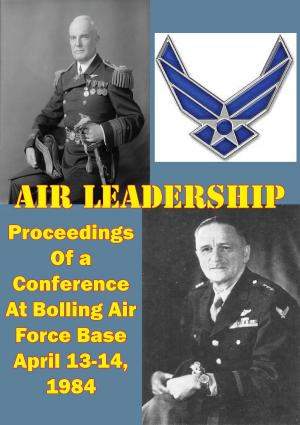Dive Bomber: Learning To Fly The Navy’s Fighting Planes
Nonfiction, History, Germany, European General, Military, United States| Author: | Lt.-Cmdr. Robert A. Winston | ISBN: | 9781786256577 |
| Publisher: | Tannenberg Publishing | Publication: | November 6, 2015 |
| Imprint: | Tannenberg Publishing | Language: | English |
| Author: | Lt.-Cmdr. Robert A. Winston |
| ISBN: | 9781786256577 |
| Publisher: | Tannenberg Publishing |
| Publication: | November 6, 2015 |
| Imprint: | Tannenberg Publishing |
| Language: | English |
Seized by an urge to learn flying Robert Alexander Winston would not be put off by the high fees charged by the private firms; he decided to join the nascent Naval Air Service in 1935. In this fast paced, witty and engaging memoir he describes his time spent as a Naval Cadet in learning to fly at the NAS Pensacola. He passed his carrier qualification aboard USS Saratoga, before being assigned to Fighting Squadron 6 flying off the USS Enterprise. His four term hitch in the Navy ended in 1939 and he entered the Naval Reserve.
Robert A. Winston was born in Washington, Indiana, in 1907 and graduated from Indiana University. He worked for The New York Times and The New York News for five years before starting flight training with the navy in 1935. He flew in fighting squadrons on both coasts and as an instructor at Pensacola, and he wrote about his initial aviation training in Dive Bomber, published in 1939 when Winston held the rank of lieutenant. In his second book, Aces Wild, he chronicled his experiences in Europe during 1939-40 as a test pilot accompanying a consignment of fighters destined for Finland. Back on active duty in the United States, he served as a flight instructor, then in the public relations office in Washington, D.C. After the attack on Pearl Harbor he was assigned to combat duty in the Pacific, which he recounts in Fighting Squadron, published in 1946 when Winston was a commander. At the end of the war he was serving on Admiral Nimitz’s staff on Guam. From there he moved to Stockholm, where he served as the naval air attaché.
Seized by an urge to learn flying Robert Alexander Winston would not be put off by the high fees charged by the private firms; he decided to join the nascent Naval Air Service in 1935. In this fast paced, witty and engaging memoir he describes his time spent as a Naval Cadet in learning to fly at the NAS Pensacola. He passed his carrier qualification aboard USS Saratoga, before being assigned to Fighting Squadron 6 flying off the USS Enterprise. His four term hitch in the Navy ended in 1939 and he entered the Naval Reserve.
Robert A. Winston was born in Washington, Indiana, in 1907 and graduated from Indiana University. He worked for The New York Times and The New York News for five years before starting flight training with the navy in 1935. He flew in fighting squadrons on both coasts and as an instructor at Pensacola, and he wrote about his initial aviation training in Dive Bomber, published in 1939 when Winston held the rank of lieutenant. In his second book, Aces Wild, he chronicled his experiences in Europe during 1939-40 as a test pilot accompanying a consignment of fighters destined for Finland. Back on active duty in the United States, he served as a flight instructor, then in the public relations office in Washington, D.C. After the attack on Pearl Harbor he was assigned to combat duty in the Pacific, which he recounts in Fighting Squadron, published in 1946 when Winston was a commander. At the end of the war he was serving on Admiral Nimitz’s staff on Guam. From there he moved to Stockholm, where he served as the naval air attaché.





![Cover of the book Thunderbolt!: The Extraordinary Story Of A World War II Ace [Illustrated Edition] by Lt.-Cmdr. Robert A. Winston](https://www.kuoky.com/images/2015/november/300x300/9781786251817-P2gc_300x.jpg)








![Cover of the book Russian-Soviet Unconventional Wars in the Caucasus, Central Asia, and Afghanistan [Illustrated Edition] by Lt.-Cmdr. Robert A. Winston](https://www.kuoky.com/images/2015/november/300x300/9781782899655-UNi2_300x.jpg)
![Cover of the book Strategy For Defeat: The Luftwaffe, 1933-1945 [Illustrated Edition] by Lt.-Cmdr. Robert A. Winston](https://www.kuoky.com/images/2015/november/300x300/9781786257703-egzS_300x.jpg)